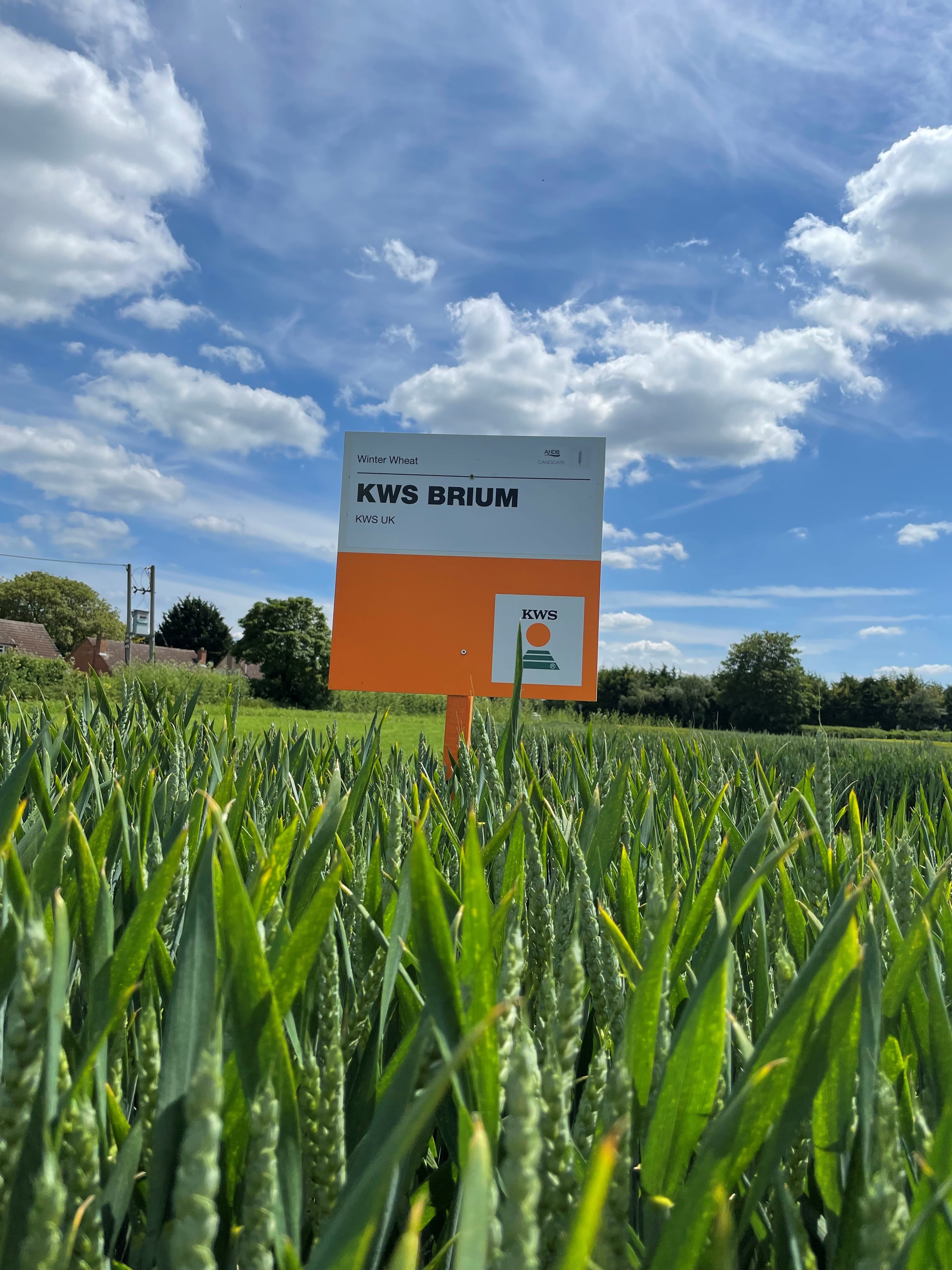How to get the most out of later drilled wheat
Later drilled wheat crops can deliver top yields whilst offering better blackgrass and disease control options with potentially lower growing costs than their September-sown counterparts too, says James Maguire of KWS UK.
“Later drilling is becoming an increasingly popular option for many growers looking to
combat blackgrass and avoid the worst effects of Septoria with a recent KWS survey suggesting 70% of growers are now moving this way,” he says.
“High autumn vigour and speed of movement in the spring to extend the grain-fill period are critical for later drilled varieties as are supercharged tillering potential, strong root development and the ability to tiller strongly at lower temperatures.
“All in all, we’re looking for a more aggressive plant type with a lot of get up and go and to help and smooth over the compromises and variability that can result from later drilling.”
With the RL trials now being drilled mid-October, the information contained is more relevant to later drilling than ten years ago when trials were drilled in September, he points out.
“Generally, you can have confidence in the varieties available in terms of their recommended drilling date but if you want to be really sure or are in a marginal area, then look for the proven performance of varieties identified in the late-sown RL.
“Ideal choices up until the end of November would be the KWS varieties Jackal, Zyatt and Parkin, whilst Kerrin, Extase, Siskin and the new Cranium deliver strong performances drilled up to the end of December.
“KWS Firefly can be also drilled from the start of September to the end of February adding real flexibility to the rotation.”
Think portfolio rather than just variety
Adding a greater range of varieties into the mix can also help growers benefit from a greater range of management options throughout the year, James Maguire points out.
“Modern varieties have so much to offer it’s tempting to make decisions on them in isolation but the real benefits of modern breeding are only fully realised when you integrate key traits into a schedule taking into account varietal performance throughout the year.
“Using highly Septoria resistant varieties like KWS Extase and KWS Siskin is always a good starting point but you can use a variety like new KWS Cranium in later slots, for example, to create different management options throughout the growing season.
“Managed properly, you can create wide spray windows through the year to spread workload at key timings, bringing them closer together for simpler, quicker management or mix and match intervals for sprays to suit individual farm workloads.
“In addition, you can ensure chemistry is applied at precisely the right time to get the best response from it so, combined with disease resistant varieties, you can optimise spray costs and disease control.
“And the same is true with harvest date. Depending on your rotations, you can use variety and drilling date to create an early harvest, a more compact one or spread it out over the summer to reduce pressure on machinery.”
More vigorous, later drilled varieties also exert greater competition against weeds and this can benefit soils significantly, he adds.
“Such varieties can reduce the need for heavy duty cultivations in the autumn and reduce potential compaction through excessive machinery travel and this can help minimise soil damage.
“So if you make the right decisions with variety and portfolio for later drilling, chances are you’ll be kinder to your soils, be using chemistry more effectively, reducing applications and cutting back on diesel costs.
“All of which can significantly reduce your carbon footprint, as well.”
KWS Cranium ticks all the boxes for features of high or very high importance in modern wheat production
New KWS Cranium ideal for later slots
Although a mainstream player, Group 4 hard wheat KWS Cranium also fits well into the later drilling slot from mid October onwards adding considerable flexibility to sowing schedules, says KWS’ Will Compson.
“Recommended for the whole of the UK in the 2021/22 RL, KWS Cranium ticks all the boxes for features of high or very high importance in modern wheat production.
“With the best combination of yield, Yellow Rust resistance and OWBM resistance on the 2021/22 RL, it’s a great example of our Sowing for Peak Performance (SPP) work to future-proof varieties as much as we can.
“KWS Cranium has a yield of 104% of control in the RL, an 8 for Yellow Rust resistance and gets twin 8s for lodging performance, both with and without PGRs, plus a 6 for Septoria resistance – an exceptional package for a top yielding hard feed type.
“KWS Cranium has the best late-drilled performance in the 2021/22 RL producing a yield of 108% of controls compared to 106% for the next closest variety recommended for later drilling.
“In our own trials, KWS Cranium is one of the faster developing varieties being amongst the first to reach Growth Stage 32. In this way it achieves good ground cover allowing it to outcompete weeds more easily whilst creating a good plant stand.
“KWS Cranium’s reliable grain package, including a good HFN (277) and specific weight (75.3kg/hl), further adds to its overall appeal.”
“As such, KWS Cranium can effectively be used as a later variety strategically placed with other varieties to create working windows through the growing year.
“With its good yellow rust resistance, it’s a variety that can be drilled in October that won’t stress growers out at T0 and T1.”
Your consultants






